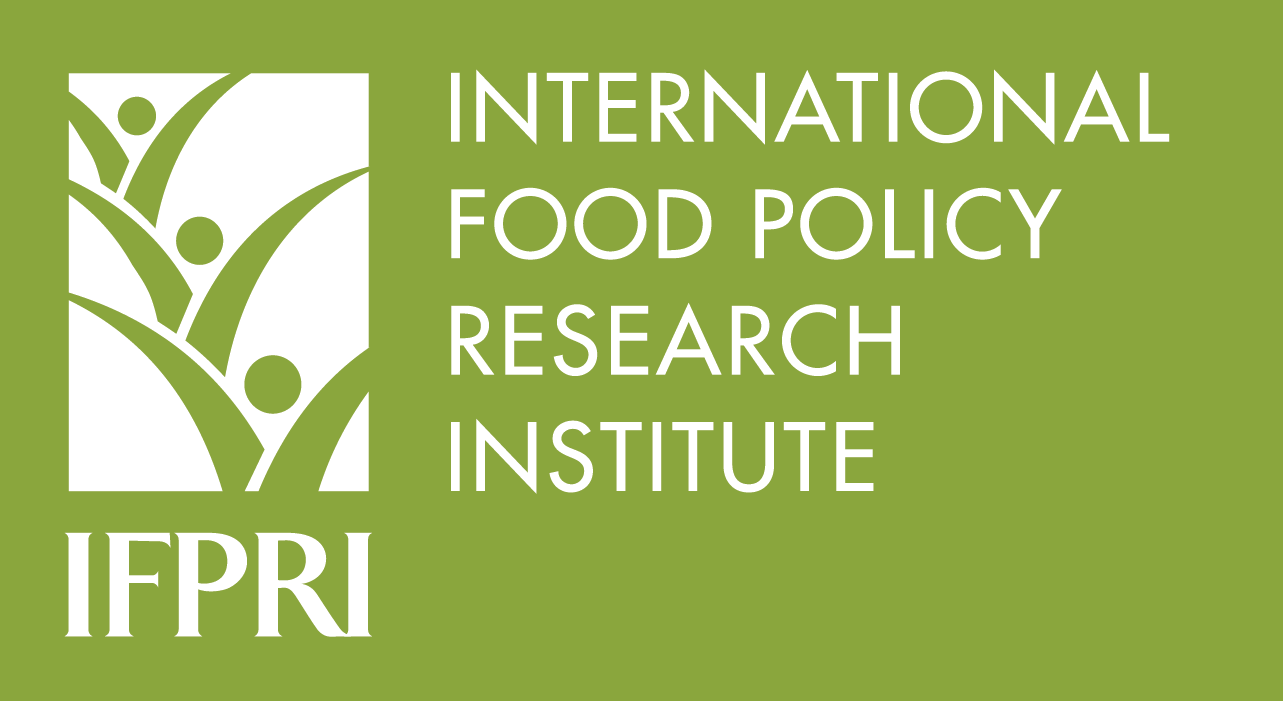Focal point
Location
About IFPRI
The International Food Policy Research Institute (IFPRI) provides research-based policy solutions to sustainably reduce poverty and end hunger and malnutrition in developing countries. Established in 1975, IFPRI currently has more than 500 employees working in over 50 countries. It is a research center of theCGIAR Consortium, a worldwide partnership engaged in agricultural research for development.
Vision and Mission
IFPRI’s vision is a world free of hunger and malnutrition. Its mission is to provide research-based policy solutions that sustainably reduce poverty and end hunger and malnutrition.
What We Do
Research at IFPRI focuses on six strategic areas:
- Ensuring Sustainable Food Production: IFPRI’s research analyzes options for policies, institutions, innovations, and technologies that can advance sustainable food production in a context of resource scarcity, threats to biodiversity, and climate change. READ MORE
- Promoting Healthy Food Systems: IFPRI examines how to improve diet quality and nutrition for the poor, focusing particularly on women and children, and works to create synergies among the three vital components of the food system: agriculture, health, and nutrition. READ MORE
- Improving Markets and Trade: IFPRI’s research focuses on strengthening markets and correcting market failures to enhance the benefits from market participation for small-scale farmers. READ MORE
- Transforming Agriculture: The aim of IFPRI’s research in this area is to improve development strategies to ensure broad-based rural growth and to accelerate the transformation from low-income, rural, agriculture-based economies to high-income, more urbanized, and industrial service-based ones. READ MORE
- Building Resilience: IFPRI’s research explores the causes and impacts of environmental, political, and economic shocks that can affect food security, nutrition, health, and well-being and evaluates interventions designed to enhance resilience at various levels. READ MORE
- Strengthening Institutions and Governance: IFPRI’s research on institutions centers on collective action in management of natural resources and farmer organizations. Its governance-focused research examines the political economy of agricultural policymaking, the degree of state capacity and political will required for achieving economic transformation, and the impacts of different governance arrangements.
Research on gender cuts across all six areas, because understanding the relationships between women and men can illuminate the pathway to sustainable and inclusive economic development.
IFPRI also leads two CGIAR Research Programs (CRPs): Policies, Institutions, and Markets (PIM) andAgriculture for Nutrition and Health (A4NH).
Beyond research, IFPRI’s work includes partnerships, communications, and capacity strengthening. The Institute collaborates with development implementers, public institutions, the private sector, farmers’ organizations, and other partners around the world.
Resources
Displaying 991 - 995 of 1521Back to the future
"Recent trends in agricultural growth and food security in Eastern and Central Africa (ECA) have been discouraging. With very low labor productivity, yields, and growth rates, agriculture is unable to keep up with population growth or achieve the type of pro-poor growth needed to reduce poverty dramatically.Yet agriculture accounts for about half of the region’s gross domestic product (GDP) and is the main source of livelihood for the majority of the population. Behind this gloomy picture, however, lies agriculture’s potential to be the engine for growth in ECA.
Policies and Programs Affecting Land Management Practices, Input Use, and Productivity in the Highlands of Amhara Region, Ethiopia
Increasing agricultural productivity is an important challenge in Sub-Saharan Africa (SSA). Since the 1960s, agricultural production in SSA has failed to keep up with population growth.
Biting the bullet
"Close to one billion people worldwide depend directly upon the drylands for their livelihoods. Because of their climatic conditions and political and economic marginalization drylands also have some of the highest incidents of poverty. Pastoral and sedentary production systems coexist in these areas and both very often use common property arrangements to manage access and use of natural resources. Despite their history of complementary interactions, pastoralists and sedentary farmers are increasingly faced with conflicting claims over land and other natural resources.
Zero Tillage or Reduced Tillage: The Key to Intensification of the Crop?Livestock System in Ethiopia
Numerous methods are available for increasing crop and livestock production in the Ethiopian highlands. Both national and international research institutes have developed technologies that are technically appropriate for these conditions. Examples of such technologies are the broad-bed maker for vertisols and cow traction (Zerbini, Woldu, and Shapiro 1999) and use of a single ox to pull the plow (Ouwerkerk 1990). However, farmers’ adoption of these technologies has been very limited, and farming is still characterized in most areas by low input use and limited use of improved technologies.
Agricultural research
Sustained, well-targeted, and effectively used investments in R&D have reaped handsome rewards from improved agricultural productivity and cheaper, higher quality foods and fibers. As we begin a new millennium, the global patterns of investments in agricultural R&D are changing in ways that may have profound consequences for the structure of agriculture worldwide and the ability of poor people in poor counties to feed themselves. This report documents and discusses these changing investment patterns, highlighting developments in the public and private sectors.



